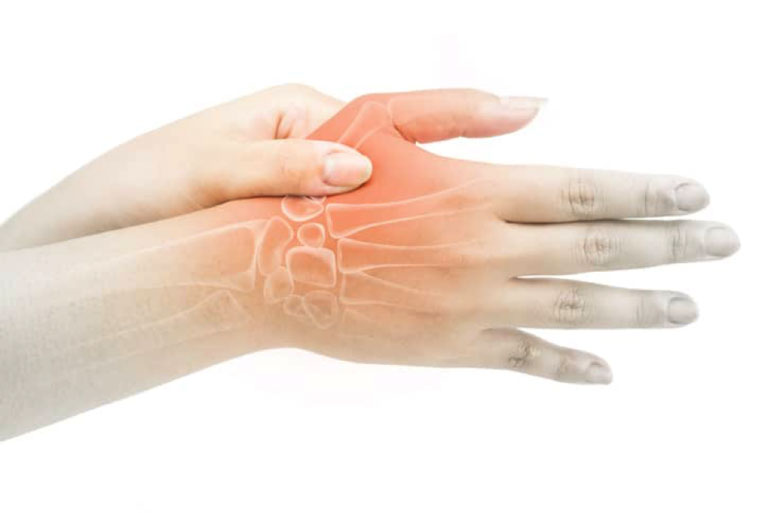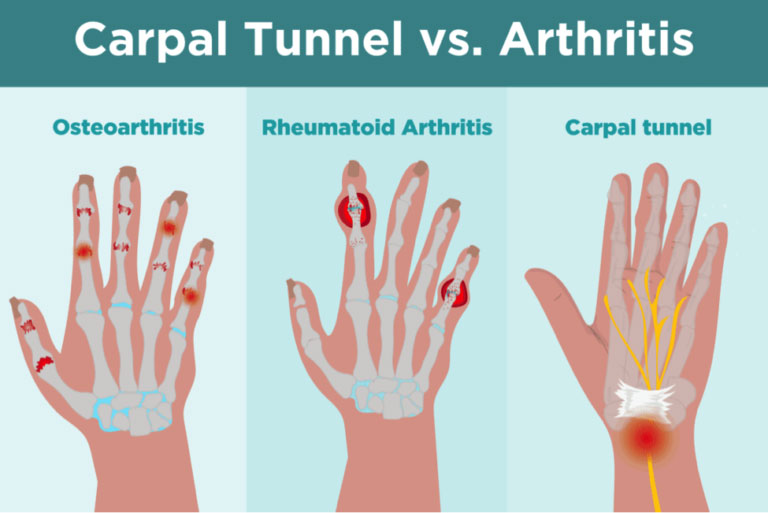WHAT IS THE THUMB?
Thumb arthritis occurs when the cartilage in the thumb joint wears away, causing the bones in the joint to rub together. Learn more about trigger finger treatment options.The thumb is extremely important and has many functions, and according to an article published on Mental Floss, any pain felt around the thumb might require changes in the person’s life (2021).
WHAT IS THUMB JOINT PAIN – CAUSE AND DIAGNOSE?
The joint that holds the thumb and the hand together is called the carpometacarpal (CMC) joint, also known as the thumb’s saddle joint. It is the most active one between all five of them, and it allows us to perform fine motor movements. It usually goes by the name “opposable thumbs”
because it gives people the ability to hold things by moving around to a point where it can touch other fingers. “This ability is facilitated by a sellar (saddle-shaped) joint between the trapezium (the wrist bone that supports the thumb) and the first metacarpal, which allows an approximately 45° range of rotation of the thumb about its own long axis”. (Center For Academic Research & Training in Anthropogeny, 2021). Yes, people can survive without their thumbs, but the easiest tasks become the hardest.
You may experience pain in your thumb or soreness whenever you try moving or flexing it. Most of the times, the pain might go after a few days but if it does not, it could be the result of serious health condition. We use our thumbs in almost every task so we can easily hurt them without even realizing it. Symptoms can be severe or mild; it all depends on the reason behind the pain. Basal joint or rheumatoid arthritis, Carpal tunnel syndrome, and the overuse of thumb can all to Thumb Joint Pain – Cause and Diagnose. There are many factors that increase the risk of this condition. For example, the gender plays an important role, as women are more likely to experience it than men. Also, being over 40 years old, injuring your thumb frequently, and being overweight are all reasons which make this condition worse. A sharp pain can occur during any movement of your finger, you will feel like your strength has lessened while trying to grip something, and you might notice swelling and stiffness at the base of your thumb.
Treatments differ from a condition to another, you can treat it with medication and anti-inflammatory herbs to ease the pain, you can undergo physical therapy, or when the case is severe, the doctor might suggest you do a surgery or to inject Corticosteroid. If your pain persists for longer than 2-3 days, you should call your health care provider so they can diagnose your case and give you the right treatment.

WHAT CAN CAUSE THUMB JOINT PAIN – CAUSE AND DIAGNOSE?
We tend to use our thumbs in every task, so if we feel pain whenever we try to flex it, it might impede these tasks and cause difficulties in mundane activities. Thus, knowing the source of the discomfort is essential to find the right treatment. Thumb Joint Pain – Cause and Diagnose can occur due to:
- Rheumatoid arthritis (RA): it is an autoimmune disease that leads to pain in your joint and damage in several parts of your body. If one side of your body is affected, the other side will automatically be affected as well. In other words, “if a joint is affected in one of your arms or legs, the same joint in the other arm or leg will probably be affected, too.” (Healthline, 2019). And That is what makes the diagnosis of this condition easier than other diseases. Symptoms include joint pain, joint swelling, and deformities in addition to losing the function over your joints. These signs should never be ignored even if they do not persist. When you discover the disease on an early stage, it becomes easier to treat it. If you are diagnosed with arthritis, you are more likely to be referred to a rheumatologist.
- Osteoarthritis: it is a very common disease which affects millions of people all over the world. It happens with the deterioration of the cartilage cushioning the end of the bones. You can manage the symptoms in this condition, but once the damage is done it is irreversible. To slow down the spread of the disease you can follow a healthy lifestyle and stay active by exercising or going on short walks. The symptoms worsen with time, and may include pain, stiffness, tenderness, bone spurs and swelling. You should take an appointment with the doctor if the pain is not decreasing.
- Carpal tunnel syndrome: it happens when there is something pressuring the nerve in your wrist. Its ache feels like weakness, numbness, and tingling sensation in your wrist, fingers and joints. The signs often get worse at night. You might not need any treatment for it because most of the time, it heals by itself and specially if it was a result of pregnancy. In order to relieve yourself you can do some hand exercises, you can take over the counter medication such as paracetamol or ibuprofen, or you can stop the activities causing it.
- Injury or sprain: when your thumb’s ligaments are damaged, you are experiencing a thumb sprain. You might be a subject to these injuries whenever you are doing a sport or if you fell down. As long as the ligaments are not torn, the injury will heal with some simple treatments at home. But if your thumb is broken or there is a tear in the ligament, you will probably feel intense pain at the site of the damaged bone and the pain might refer to your forearm and wrist. Keep in mind that Extreme pain may cause nausea. When you fracture your thumb, you will need to wear a cast so that the fragment is held in its place. If it was a more serious case, you may need a surgery then wear a cast after it.
- Overuse of thumb: like any other joint, overusing your thumb could lead to an uncomfortable feeling described as soreness along with a warm and tingling sensation.
- Trigger finger: “stenosing flexor tenosynovitis, or trigger finger, is one of the most common causes of hand pain.” (Medical News Today, 2021). When the finger becomes stuck in a bent position, it may be caused by the inflammation of the tendon sheath. You will find a difficulty in straightening your thumb, a popping sensation whenever you try to move it, and ache and soreness at the bottom of the finger. The trigger finger is usually treated by a nonsteroidal anti-inflammatory (NSAID) drug to decrease the inflammation, you can also wear a splint to avoid moving your thumb, a surgery might also be recommended to free up movement of your affected finger.
- De Quervain’s tenosynovitis: it is a similar condition to the trigger finger. however, during the trigger finger, your tendon sheath is inflamed, on the other hand, during De Quervain’s tenosynovitis, your tendon itself is inflamed. The symptoms may include inability to make a fist, inability to grasp things, referred forearm pain, swelling and tenderness. Its cause is still unidentified but repetitive motions may increase its risk. If your age is between 30 and 50 you are more likely to be affected by it.
- Ganglion cysts: the synovial fluid is a liquid that lubricates the joint, it is found in some of them throughout our body. The Ganglion cyst is formed due to a group of synovial fluid, they might develop near the thumb and that is when a lump becomes visible to you. Pain and discomfort while moving can be result of the cysts. Sometimes they disappear by themselves and without any treatment but if they persist with pain you might need to wear a brace, drain the cysts by a needle, or remove it with a surgery.

WHEN SHOULD YOU SEE A DOCTOR?
When you are experiencing severe pain that does not go away and affects your everyday tasks and activities, you should contact your health care provider to make sure that there is not a serious health issue behind it. Contact them if:
- You are unable to move your finger.
- Warm feeling in your thumb.
- Your thumb looks fractured or unstable

HOW TO DIAGNOSE THE CAUSE OF THUMB JOINT PAIN – CAUSE AND DIAGNOSE?
In order to define the cause, the doctor will first do a physical examination while asking questions about past injuries or traumas. If the doctor could not detect the problem by simply examining it, they can :
- Assess the level of pain and check what movement hurts you are the most.
- Listen and feel the finger while holding the joint and moving the thumb.
- X-Ray: in case they suspect the presence of arthritis. It can also show if the space between the bones is decreasing.
- M R I
- Ultrasound
